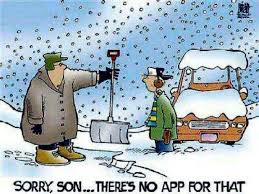I won’t be signing on again until Jan. 2, so let me take this opportunity to wish all of my readers a happy, healthy, peaceful, safe, and inspirational 2018. I don’t mention “prosperous,” because if we have all those other things, we’re prosperous far beyond what financial success can bring.
Archive for December 30, 2017
New Year’s Day–a Movable Feast
Today I offer you some slightly slanted observations about the event we call “New Years Day.”
No, New Year’s Day wasn’t invented by a bunch of teenagers looking to party, a football league, or even Hallmark. It goes back to 2000 BC, to ancient Babylon. They celebrated Spring, a time of rebirth, by starting a new year at the first New Moon after the Vernal Equinox. And they celebrated big, for eleven days. The Romans continued the practice but ran into a problem: the emperors kept changing the calendar, which moved New Year’s around until it was far off from its original timing. Mainly, they observed it on March 15, although at one point Dionysius Exiguus changed it to March 25 to honor the Annunciation of Jesus. The Roman senate declared it Jan. 1, but, being politicians, it was as solid as modern day campaign promises. Finally, in 46 BC when Julius Caesar established the Julian calendar, he kept the current year going for 445 days in order to fit the new calendar with the sun’s cycle, just so he could establish New Year’s on Jan. 1. (Could this have been his way to “beware the ides of March”?)
Enter the Catholic Church. Apparently, people were having too much unauthorized fun. They tried to put an end to the pagan frivolities and, after awhile, replaced them with religious observances, moving New Year’s around to coincide with various feast days. That’s how it came to be a holy day to anyone using the Julian calendar, including some Eastern Orthodox churches.
Baby New Year began in Greece about 6000 BC. It grew out of the Greeks’ celebration of Dionysus, god of wine, symbolized by a baby in a basket which was carried about the streets to represent fertility. Early Christians liked the idea of a babe embodying the spirit of rebirth, because the baby Jesus brought the supreme rebirth. Ultimately, the Church, despite her continued denunciation of New Year’s festivities as pagan, allowed a celebration including a baby, so long as it clearly represented Baby Jesus. The Germans, who had used the baby symbol since the 14th century, eventually brought this idea with them to America.
New Year’s, then, is historically a time of new beginnings. Whether we plant crops, as in ancient days, or make resolutions, which we’ll break within a month, we can enter into its true spirit. We can put behind us last year’s unthinking and unthinkable actions and carry with us the fruit of our kind and generous ones. Instead of resolving to make this a more peaceful world, we can roll up our sleeves and just do it.
Mmmmmm. Maybe that’s a New Year’s Resolution, after all.
About Resolutions
[Something to bolster your New Year’s resolutions: ]
“The single largest pool of untapped resource in this world is human good intentions that never translate into action.”
— Cindy Gallop
[Especially good intentions like being kinder and more tolerant with each other and helping people make better lives for themselves.]
Cell Phone Addicts
No kidding. A recent study on teenagers and cell phones showed that when kids hear a ring tone or text alert their brains release dopamine. Yes, that’s the same reaction they have to taking drugs.
50% of teens admit to being addicted to their cell phones. And the addition is real, because when they can’t use them they experience actual physiological withdrawal symptoms, like nausea, sweating, and shaking.
Okay, parents. Here’s what to do. Limit kids’ data. Program the phone to cut off at certain times (like bedtime). Model not being glued to your own phone. Have family times (dinner?) when no phones are allowed. Maybe even have a day or an evening each week when no one in the family uses a cell phone.
The idea is to have breaks in the cell-phone use so the habit can be broken and so kids can learn that it’s okay not to be tied to it 24/7.
Worth a try? For our kids’ sake…and maybe our own?
Feel Less Guilty About Christmas
Look at the mess (before and after Christmas)--tossed gift wrap (can’t burn the wrap with wax or metal in it), lots of leftovers (can’t eat it ALL), cards to toss into the garbage (pretty and thoughtful, but…), bubble wrap to get rid of (after the fun of popping all the cells), an empty gas tank (the sales! the sales!), a droopy tree (now a fire-hazard)…. It’s all quite a downer, spoiling the season.
Take heart. There’s help. Read (and follow) the suggestions in the article 10 Ways to Feel Less Guilty About Waste this Christmas.
[Thanks to Lynda DeManti for sending me this.]Have a merry–and guilt-free–Christmas!
A New Christmas Tradition
Start a new Christmas tradition. Each family member writes down a gift, placing the paper in a special stocking or wrapped box with a slot on top. The gift should be for someone outside your family—a neighbor, another family, acquaintance, person you’ve heard about. And the gift must be of time, not money or goods, a gift of self, not charity. Examples: monthly visits to a nursing home for a year; driving a person to medical appointments until he’s well; helping an adult or child learn English or to read or write; changing the attitude of a prejudiced friend. (I can give you more ideas–let me know.)
Christmas morning, as a family, open and read these “gifts” and agree to help each other follow through on them. This is the kind of gift-giving that is in the true Christmas spirit, ones that make a real difference to the people who receive our gifts as well as to our own hearts.
Have a very merry Christmas!

Racing to a Better Finish
Did you see the story about Arianna Letterman? She ran the Dallas Marathon. In a different race on the same course she saw a woman close to the finish line in obvious physical trouble. She ran over to the woman and supported her as they crossed the finish line to win the division. Why did she do it? Her explanation is today’s Thursday Thought:
“It’s so easy to make someone’s day a little bit brighter. It’s so easy to make the world a little bit of a better place just by simply picking someone up when they’re down.”
“Silent Night” Origin
Over the years, the Christmas carol became famous throughout Europe where it was assumed to be the work of Mozart, Haydn, or Beethoven. The controversy was put to rest in 1994 when a lost arrangement of “Stille Nacht” was found and written in Joseph Mohr’s handwriting. On the music sheet, Mohr had given credit to his friend by writing “Melody by Franz Xav. Gruber” in the upper right-hand corner.
From Monthly Wisdom Newsletter, http://aikiway.com/
Teaching Kids About Santa
I was delighted to see this video on hows one mom handles the issue of Santa with her kids.
Read the story behind this video in the article in the Washington Post.


